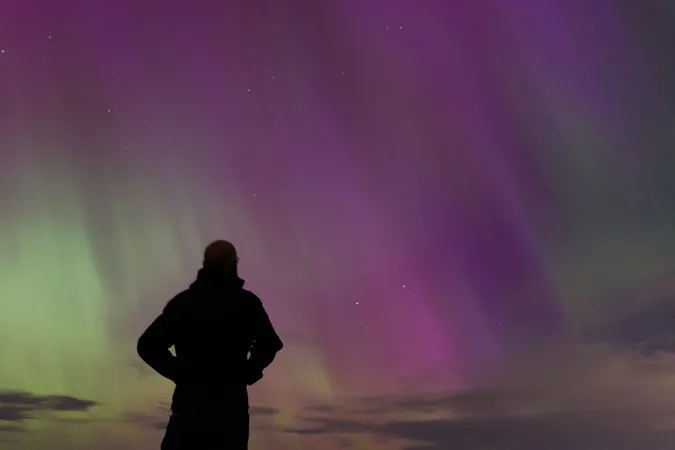
The Enigmatic Intersection of Light, Time, and Human Bioluminescence
2025-01-09
Author: Olivia
The Time Traveler
Light is not just a phenomenon; it's a time traveler. This intriguing concept was highlighted by renowned astrophysicist Neil DeGrasse Tyson, who admits it’s a thought that keeps him awake at night. In one of his thought-provoking videos, Tyson delves into the fascinating properties of light, intertwining its scientific attributes with the mysteries of our existence that can leave anyone's mind racing in the still of the night.
Einstein’s Theory of Relativity
According to Tyson, Einstein’s theory of relativity illustrates a remarkable reality: 'the faster you move, the slower time ticks for you.' This counterintuitive idea isn’t merely theoretical. It has real-world implications, particularly in the realm of satellite technology. GPS satellites, which orbit at altitudes higher than the International Space Station, experience a slightly altered space-time framework due to their distance from Earth's gravitational pull. As a result, their clocks run faster compared to those on the surface of the planet.
Light Speed and the Nature of Time
This notion extends further into the depths of relativity; at light speed, the conventional concept of time completely breaks down. While physical matter cannot withstand such velocities, photons—those enchanting particles of light—easily traverse this unimaginable continuum, bending time as they travel and contributing to the spectacle of our shared reality.
Human Bioluminescence
As I reflected on Tyson's captivating commentary about the speed of light, I was suddenly reminded of a delightful revelation: humans possess a faint bioluminescence. It brings to mind childhood memories of swimming with my godmother in the ocean under starry skies, when the waters glimmered with captivating phosphorescence. The trails created by the darting fish, along with my fingers’ movements stirring the glowing phytoplankton, felt like silent magic. It leads me to ponder how those soft, elusive photons perceive their fleeting moments.
Research Insights
Compelling research from Japanese scientists sheds light on this phenomenon. They utilized ultra-sensitive cameras to capture the emissions of light from human bodies—our own bioluminescence, a subtle yet genuine glow resulting from the metabolic reactions within our cells.
Finding Inner Light
This notion of inner light resonates on many levels. Recently, while attending the Night of Music at St. John’s United Church, I encountered Les Parsons, who expressed profound sentiments about finding one’s inner light. In a world rife with conflict and uncertainty, Parsons articulated the struggle to maintain hope amidst chaos.
A Beacon in the Darkness
'There are days when the darkness gets the best of you, and it’s pretty gosh darn hard to let the light shine,' he reflected in his moving performance.
Illuminating the Human Experience
Watching Tyson’s mesmerizing explorations of light and time, I envision Parsons, on stage with his guitar, casting forth an imperceptible glow—a reminder that we all carry a glimmer of light within us, even in our darkest moments.
The Intersection of Science and Spirit
As we navigate through life, it’s these intersections of physics, biology, and spirituality—where light transcends mere illumination—that inspire us to search for our inner resilience and illuminate the world around us.



 Brasil (PT)
Brasil (PT)
 Canada (EN)
Canada (EN)
 Chile (ES)
Chile (ES)
 Česko (CS)
Česko (CS)
 대한민국 (KO)
대한민국 (KO)
 España (ES)
España (ES)
 France (FR)
France (FR)
 Hong Kong (EN)
Hong Kong (EN)
 Italia (IT)
Italia (IT)
 日本 (JA)
日本 (JA)
 Magyarország (HU)
Magyarország (HU)
 Norge (NO)
Norge (NO)
 Polska (PL)
Polska (PL)
 Schweiz (DE)
Schweiz (DE)
 Singapore (EN)
Singapore (EN)
 Sverige (SV)
Sverige (SV)
 Suomi (FI)
Suomi (FI)
 Türkiye (TR)
Türkiye (TR)
 الإمارات العربية المتحدة (AR)
الإمارات العربية المتحدة (AR)